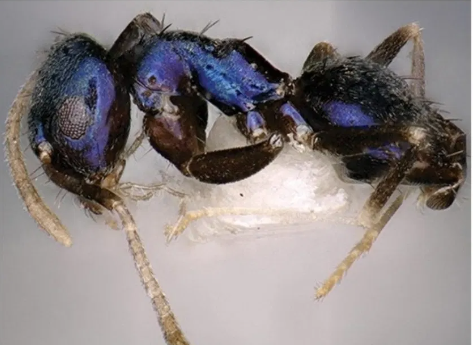New Blue Ant Species Discovered in Eastern Himalayas
In the Siang Valley of Arunachal Pradesh, scientists have recently found an amazing new type of ant in the Eastern Himalayas. A group of entomologists from the University of Florida in the USA and the Ashoka Trust for Research in Ecology and the Environment (ATREE) in Bengaluru, India, made this finding. The new species, Paraparatrechina neela, is an important addition to the genus Paraparatrechina. It is the first species of its kind to be found in the Indian subcontinent in more than one hundred years.
Background of Discovery
The discovery was made during a biodiversity trip in the remote village of Yingku. The ant was seen in a tree hole about 10 feet above the ground. A British military mission 121 years ago was the last time a new species from this genus was named. The National Geographic Society paid for this trip, which’s goal was to record the area’s rich wildlife and look into how changes in the environment have affected it.
Description of Paraparatrechina neela
Paraparatrechina neela is less than 2 mm long and has a mostly shiny blue body, which makes it different from most of the 16,724 known species of ants, which don’t usually have blue bodies. Its head is subtriangular, has big eyes, and a triangular jaw with five teeth. These features make it stand out from other animals in the same group.
Scientific Significance of the Discovery
The finding of Paraparatrechina neela not only shows how diverse the Himalayas are, but it also shows how ants are unique in their ecological niches. This discovery is important for entomology because it shows that even areas that have been studied a lot can still yield new species. This helps us learn more about biodiversity and how complex the ecosystems in these places are.
Conservation Concerns
The Siang Valley is known for having a lot of different ecosystems. However, large-scale infrastructure projects and climate change pose major risks to the valley. Not only do these changes hurt the local wildlife, but they also hurt the millions of people who depend on these environments for their survival. It is important to learn about and record new species like Paraparatrechina neela so that we can make smart protection plans that protect both human and environmental health.
Month: Current Affairs - June, 2024
Category: Environment Current Affairs








